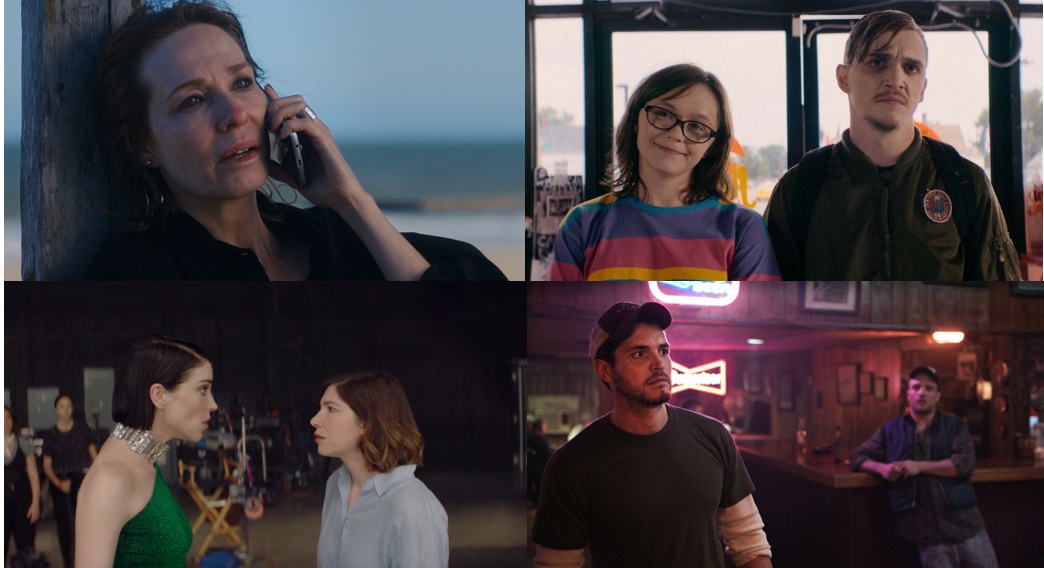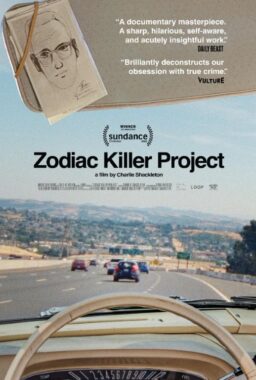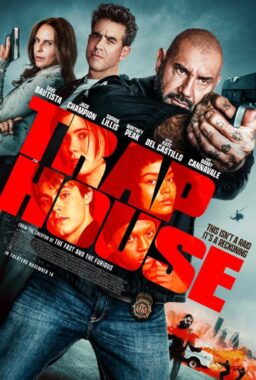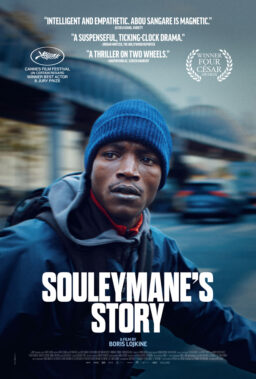Even as the film industry takes halting steps to safely reopen in the age of COVID-19, it’s difficult to fathom when and how in-person film festivals might resume, or whether events so dependent on strangers flying in from afar to pack movie theaters and mingle at galas still have a place in this new abnormal.
With such questions left essentially unanswerable for the time being, the biggest summer and fall festivals—in Venice, Toronto, and New York—have emerged from these last few months in an unusually collaborative state of mind. Major titles like Chloé Zhao’s “Nomadland” will play all three festivals (with the now-canceled Telluride screening it via a special Los Angeles drive-in engagement), while reduced lineups and a mixture of drive-in and virtual screenings at each should ensure that selections can still build buzz and gain visibility in the eyes of distributors, even without the added fanfare of red carpets and afterparties that would typically accompany their premieres.
The festival circuit has long been a linchpin of the Hollywood distribution ecosystem, and it matters even more to those films seeking awards attention. But with this fall’s major players already solidifying, this feels as good a time as any to look back at those festival titles from the first half of 2020 still seeking distribution: some that played Sundance, the last festival to go ahead as planned before the pandemic struck (and a potential super-spreader event for the coronavirus, some have theorized), and others that popped up at plucky regional fests which moved online to retain some presence this year.
As distributors weigh their options and try to anticipate the myriad challenges of releasing films in times such as these, some are prioritizing VOD releases while others look to theaters, now sluggishly reopening. Streamers are overall in a better position, but with increasing competition in that space, they’re more desperate than ever for films that can stand out from the crowd. Here are nine festival premieres from the first half of this year still searching for the homes they richly deserve.

“Drought”
Almost audaciously hopeful about family, friendship, and our capacity for kindness, Hannah Black and Megan Petersen’s heartwarming “Drought” divests its optimism of excess sap with fine performances and straight-down-the-middle charm. Premiered virtually at the Vail Film Festival, where it won an audience award, the Duplass-produced film follows Sam (Black), a young woman who hits the road to chase a summer storm with her meteorology-obsessed brother Carl (Owen Scheid). Riding along in their mom’s ice cream truck, estranged sister Lillian (Petersen) and family friend Lewis (Drew Scheid) share Sam’s desire to more fully understand Carl, who is on the autism spectrum. Black’s script smartly pushes back against the parts these characters think they should play in each other’s lives, yet “Drought” is ultimately about the small sacrifices we make for family, and the significant ways they reward us in return. Like this year’s “Driveways” (which also played at Vail and has since been distributed by FilmRise), it suggests little acts of love are all we have, but that they’re enough. It’s a simple message, one any open-hearted indie distributor should proudly back.

Verónica Chen’s ferocious “High Tide,” which flew under the radar at Sundance, plays like Argentina’s answer to “Straw Dogs,” taut and distressing, before turning on the audience in a third act that snaps shut like a bear-trap around your presumptions of its characters. A mesmerizing Gloria Carrá stars as affluent Laura, who sleeps with Weisman (Jorge Sésan), the lead contractor building a barbecue shed behind her husband’s beach house. The next morning, Laura awakens to learn the other laborers (Cristian Salguero and Hector Bordoni) have witnessed this infidelity, and that it’s reduced her standing in their eyes. After Weisman abruptly vanishes, his workmates appear emboldened, using Laura’s bathroom and taking food from the fridge, more sinister appetites behind their eyes. Razor-sharp and cold to the touch, “High Tide” ultimately reminds of Bong Joon-ho’s “Parasite” in its view of class and gender as veneers not just obscuring but abetting our primal impulses. So you want to eat the rich? Don’t expect an easy meal.

“The Nowhere Inn”
It was the tale of two pop stars at Sundance, with Taylor Swift’s earnest-by-design “Miss Americana” opening the festival and this viciously playful metafic lurking in the Midnight section like its scissor-wielding Tethered. Both films needle the celebrity complex, and the push-pull between artifice and authenticity that holds it in place; only one has the brio to spiral that examination into a mind-melting, unnervingly manic excoriation of the whole enterprise. Annie Clark (aka avant-garde guitar god St. Vincent) stars opposite Sleater-Kinney’s Carrie Brownstein, both playing themselves as friends preparing to shoot a documentary about Clark’s life on tour. But as Carrie learns, backstage Annie is a cheery, early-to-bed Scrabble fiend—in other words, she’s normal, and disconnected enough from her latex-clad domme de guerre that Carrie fears audiences won’t care. So she pushes Annie to act out, and her friend obliges by unleashing the pop-monster within. With Bill Benz (“Portlandia”) directing, “The Nowhere Inn” goes berserk and baroque, whether it’s surprise-casting a hilariously game Dakota Johnson as Annie’s camera-primed paramour or jumping down a reality-collapsing rabbit hole to reach its fever-pitch finale.
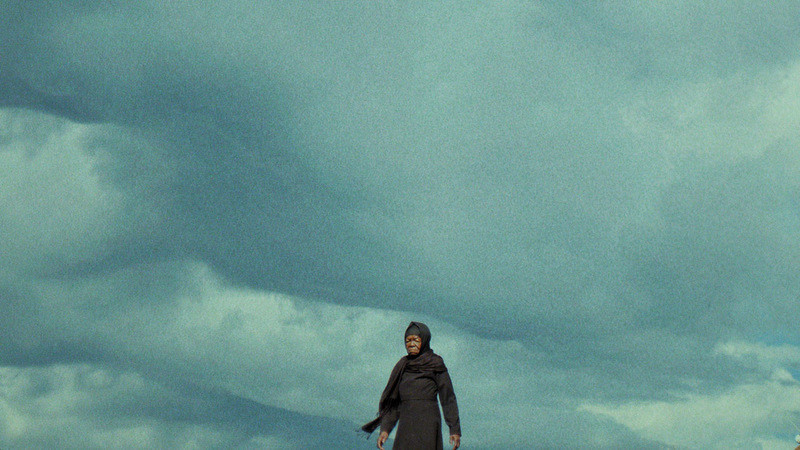
“This Is Not A Burial, It’s A Resurrection”
Depicting a level of displacement so holistic and terrible it triggers shockwaves that break the world open, Lesothan filmmaker Lemohang Jeremiah Mosese’s first fiction feature centers on an 80-year-old widow, Mantoa (Mary Twala Mhlongo), who resists the forced resettlement of her village. Grieving unimaginable losses, including that of a son in a mining accident, Mantoa’s angered at the prospect of exhuming her dead from the local cemetery, which outsiders seek to flood before building a dam. Her anguished cry of defiance is gradually echoed by other villagers, but even before the eruptive climax of this magical-realist parable (winner of a Sundance special jury prize for visionary filmmaking), “This Is Not A Burial” captivates with its vivid imagery, textured score, and arresting lead turn from Twala (who died at 80 last month) that grounds the film’s more experimental qualities in lived pain and resilience. An adventurous, arthouse-oriented distributor seems the likeliest fit for this elliptical and formally ambitious title.

“The Wanting Mare”
What could be heralded as the first major science-fiction work of this new decade, should it find distribution, Nicholas Ashe Bateman’s “The Wanting Mare” (which won Best Feature at virtual Chattanooga Film Festival) explores a fantasy world called Anmaere, particularly the sweltering city of Whithren. There, wild horses roam the shoreline, both sources of wonder to this area’s impoverished inhabitants and valuable exports, once tamed, to the frozen continent of Levithen. Spanning decades, Bateman’s lyrical narrative presents three generations of women who pass down the same recurring dream, haunted by the question of its meaning. The film is visually gorgeous, lingering on ruined vistas where magic once lived then evaporated. Incredibly, Bateman filmed most of “The Wanting Mare” inside a New Jersey storage unit, crafting the movie’s visuals over five years. Even before learning that, “The Wanting Mare” had conjured in this writer the same sense of awe and admiration this site’s namesake described in his review of “Cloud Atlas,” an earnest grappling with that kind of daring and visionary picture whose inner workings defy explication. Bateman’s film is exquisitely elusive, a love dream that slips through your fingers as you reach for it, made with ingenuity and stunning clarity of vision.
Note: Last month, one of the original executive producers, Shane Carruth, tweeted a partial image of a restraining order filed against him in mid-June, after which news surfaced that he’d been accused of mental, emotional, and physical abuse by an ex-girlfriend, director Amy Seimetz. Bateman has confirmed to RogerEbert.com that, once producers learned of this, Carruth was swiftly removed from “The Wanting Mare.” He will not be credited, nor receive any percentage of the film’s future grosses.
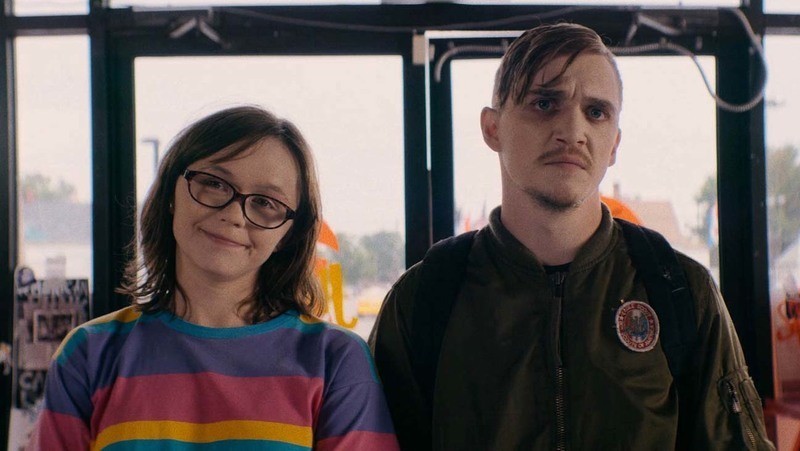
“Dinner in America”
Willfully off-kilter and cheerily profane, “Dinner in America” won’t be for everyone, as proven by its mixed reception out of Sundance earlier this year. But there’s a sneaky charm to this Midwest-misfits-in-arms comedy, from writer/director Adam Carter Rehmeier. Much credit for that goes to rising stars Kyle Gallner (“Red State”) and Emily Skeggs (Broadway’s “Fun Home”), delivering well-calibrated performances that should signify breakout moments for both. As Simon, a scowling punk-rocker on the lam, Gallner gives great aggro, until a chance encounter with shy Emily (Skeggs) sets him on a better path—albeit one with a few detours along the way to rain karmic justice down on the local bullies. Spiky, sweet, and sporting some surprisingly great punk songs original to the film, it’s got the makings of a cult fave in the hands of a savvy, teen-focused indie distributor or streamer.

“The Evening Hour”
Precise, patient, and rife with painful truths, Braden King’s “The Evening Hour” opens on the image of an Appalachian landscape, serene and sun-dappled even as the camera pans to capture a far-off explosion. Life feels like that, subdued then minatory, around the coal-country milieu of this slow-simmering drama, where folks know each other’s business, most grew up together, and all are trapped to varying degrees by an influx of opiates that’s poisoned the few opportunities they had. To nursing aide Cole (Philip Ettinger), selling Oxy on the side isn’t just about saving up to skip town; he’s steering friends clear of a bigger-deal drug lord (Marc Menchaca) while doing his best to stop them from ODing. But when a childhood friend (Cosmo Jarvis) returns, upsetting this tenuous equilibrium—and, for good measure, Cole’s relationship with girlfriend Charlotte (Stacy Martin)—“The Evening Hour” is unflinchingly honest about the fallout. Known for playing a soul-sick environmentalist in “First Reformed,” Ettinger drills down into the similarly conflicted psyche of a man making whatever choices help him fend off his grim circumstances for a little longer. It’s an impressive performance in a film that deserves widespread attention for the subject matter as much as its striking execution.

“I Am A Town”
Photographer Mischa Richter turns a soulful eye on the place his family has long called home in this poignant documentary, which premiered at MoMA’s Doc Fortnight before opening Provincetown’s own “reimagined” virtual/drive-in festival last month. At the easternmost tip of Cape Cod, Provincetown enjoys its reputation as an outsiders’ haven; walking the main drag would in any other summer mean meeting all manner of artists, entertainers, and street merchants (not to mention goggle-eyed tourists). Richter, though, spares that scene a mere glance before heading down side streets to introduce his main subjects: townies, some eccentric and weather-beaten, others younger yet pensive, all woven stubbornly into the fabric of a community. Richter’s filmmaking is beautifully impressionistic, and he often shoots townsfolk from a distance, strolling through painterly landscapes they seem to belong to. Leaving interviewees unidentified, he seats us at kitchen tables or by window sills, dropping in on conversations with breezy spontaneity. Included in Richter’s lineup of old salts and artisans are long-time residents who’ve since passed, like author Roger Skillings and local legend Freddie Rocha, Jr.. Their presence lends “I Am A Town,” and its portraiture, the sense of a place already slipping back into history, leaving echoes and reflections to be treasured, rightly, as heirlooms.

“15 Things You Didn’t Know About Bigfoot (Number 1 Will Blow Your Mind!)”
“Stupid in a smart way and smart in a stupid way” may be one of the most incriminatingly cynical ways the co-founder of a global media empire has ever described their own brand of journalism, but it’s also a perfect way to think about this scathingly funny mockumentary (which screened at Chattanooga under its original title, “The VICE Guide to Bigfoot,” and may have fooled a few viewers there into thinking it was the genuine article). The feature debut of Adult Swim collaborator Zach Lamplugh, working from Brian Emond’s hokey-jokey script, it follows Brian (Emond), a journalist for clickbait-savvy Compound News weary of deep-dive reporting on “artisanal antibiotics” and dodging bullets to cover Ukraine’s craft-beer scene. But when he’s sent to search for Sasquatch in the Appalachian foothills, accompanied by a YouTuber (Jeffrey Stephenson) who calls himself the “Cryptid Commander,” Brian questions how much he’ll risk for the story. It’s all agreeably daffy without pulling punches in its comedic assault on VICE-styled “immersionism.” Any genre-savvy streamer with a sense of humor could turn this wacky, wily outing into a headline-making hit.

